
Oh_de_laval, Let Me Distract you
Many assume that mastering the art of collecting requires years of navigating the labyrinthine corridors of the art world. But I believe that the principles of collecting contemporary art are far more familiar than we might think—eerily similar, in fact, to the unspoken rules of modern dating.
Timing is Everything
Whether it’s the serendipitous moment someone special enters your life or the precise instant a piece of art captures your attention, timing is crucial. In both realms, whether or not we can afford it plays a significant role. For collectors, it’s financial; for the rest of us, it may be emotional, physical, or deeply personal. By applying these dating principles, we can unlock the mysteries of art collecting.

Grace Weaver, See-Saw, 2016, Courtesy Soy Captain
Provenance: The Dating History of Art
An artwork’s provenance is akin to someone’s dating history—we all care about their exes. Just as a person’s past relationships can influence their reputation in the dating pool, the previous ownership of a piece of art dramatically affects its desirability in the secondary market. How many “relationships” has this artwork been through? Who were these owners? Were they distinguished collectors, or perhaps flippers with questionable motives? The reasons for selling—debts, divorce, or simply a change in taste—can raise eyebrows. And let’s be honest, who hasn’t wondered if they’re dating a player who just got bored?

Sophie von Hellermann, Love’s Lunacy, 2020, acrylic on canvas, Courtesy: Pilar Corrias Gallery
In both dating and art collecting, particularly in the secondary market, people weigh these factors carefully. The piece is no longer in its original state—much like someone who’s been in a few too many relationships. Some collectors follow their hearts and buy what they love without a second thought. But for most, whether in love or art, it’s about the investment—both emotional and financial.

Henni Alftan, Self-Portrait, 2019. Courtesy of the artist and Karma, New York
Vanity and Social Capital
Vanity drives many of our decisions, whether we’re picking a partner or a piece of art. Fame and status can overshadow substance. After a high-profile breakup, a person can often parlay their social capital into greater success—the same goes for art. If a major institution or prominent collector once owned a piece, its value skyrockets.

Hilary Harkness, Arabella and the General, 2020, oil on linen mounted on panel, Courtesy: P.P.O.W
Yet, if a piece has changed hands too many times or lingered too long on the market, its allure fades—much like someone who’s spent too much time swiping on dating apps. The more an artwork circulates in the secondary market, the more questions arise. If it stays on the market for too long, it risks being “burned,” possibly even damaging the artist’s reputation.
In the end, provenance is everything. A piece previously owned by a museum or a distinguished collector instantly becomes more desirable. But only time will tell if this increase in value holds up, both socially and financially.
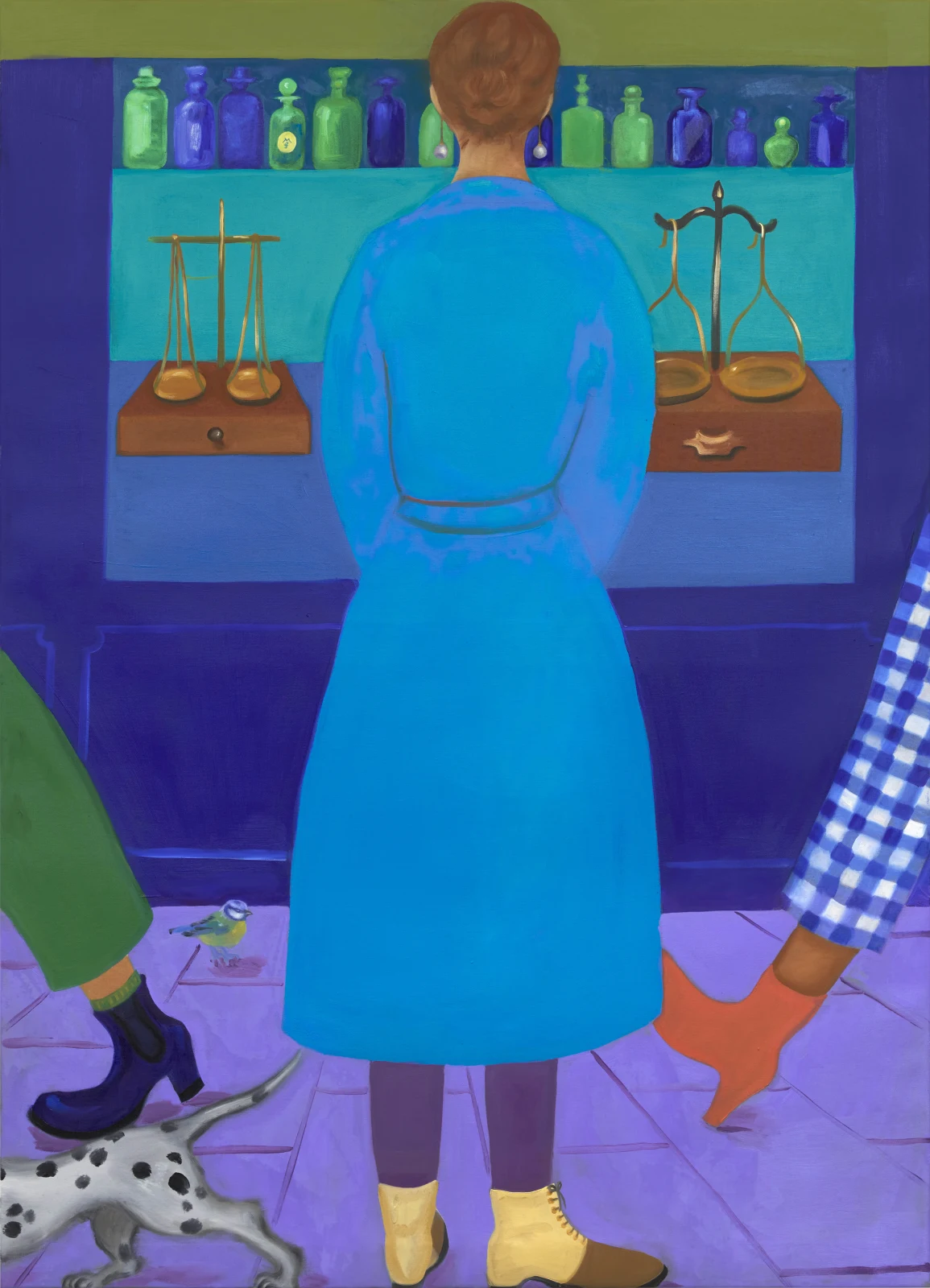
Maria Farrar, Cause and Effect, 2021, Oil on linen, Courtesy The Artist and Ota Fine Arts, Japan
CVs Matter: The Resume of Art
When collectors decide to invest in an artwork, they dive deep into its background—the artist’s gallery representation, institutional shows, and collections in major museums all matter. This is not unlike modern dating. If you’re serious, you’ll want to know someone’s history—their profession, friends, and maybe even their philanthropic endeavors. In both love and art, the resume speaks volumes.

Oh_de_laval, Romantic Leftovers
Some collectors, however, may focus less on intellectual engagement and more on what or who is attractive and well-connected. For them, the allure is all about what pleases the eye and whispers sweet nothings in their ear.
But those who collect for true love are different. They see it, they want it, they buy it—no questions asked. It’s passion, pure and simple. And in such moments, nothing else matters.
Quality and Rarity
Ask a seasoned collector what they seek in a piece, and they’ll likely say quality and rarity. But this takes years of experience, much like dating. Bad experiences teach us to make better choices next time. Those who have kissed many frogs have at least learned to tell the difference between a prince and a pretender.
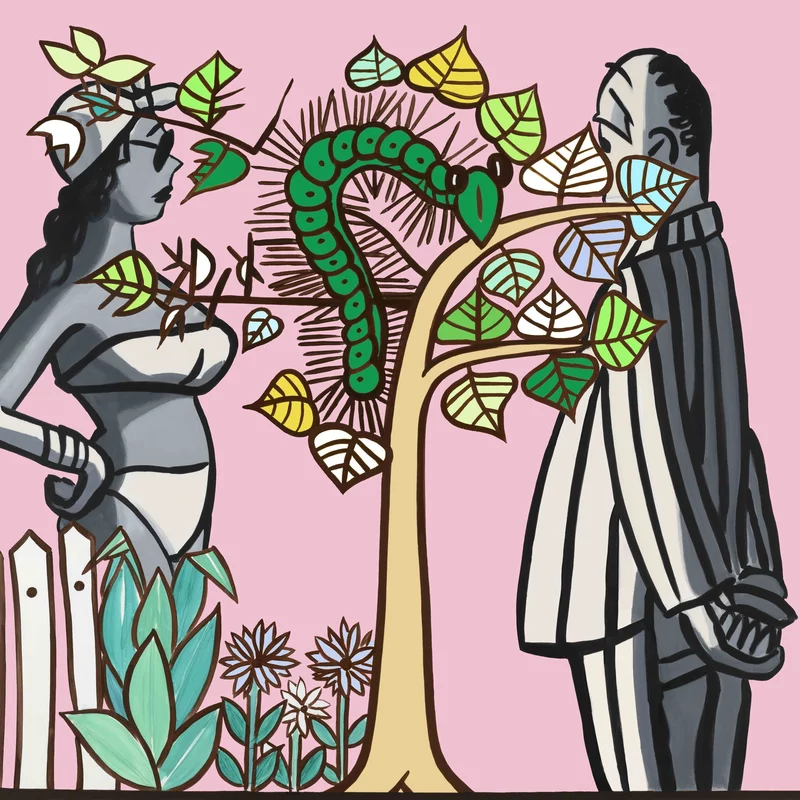
David Salle, Tree of Life #20, 2021, Courtesy Skarstedt Gallery
Still, it’s easy to be fooled by a façade. Just as someone might seem incredibly popular because they’re always busy with dates, galleries can create the illusion of demand with strategic marketing. Selling well-known names is easier because of the groundwork laid by PR teams, just as it’s easier to date someone with a reputation that precedes them.

Michael Armitage, Kampala Suburb, 2014, Courtesy White Cube (Prudence Cuming Associates Ltd.)
In the art world, the true sport lies in spotting the next big thing before it becomes mainstream. But mastering this game requires time and knowledge. What makes an artwork rare? It could be a unique style, a specific period in the artist’s life, or simply the scarcity of such works.
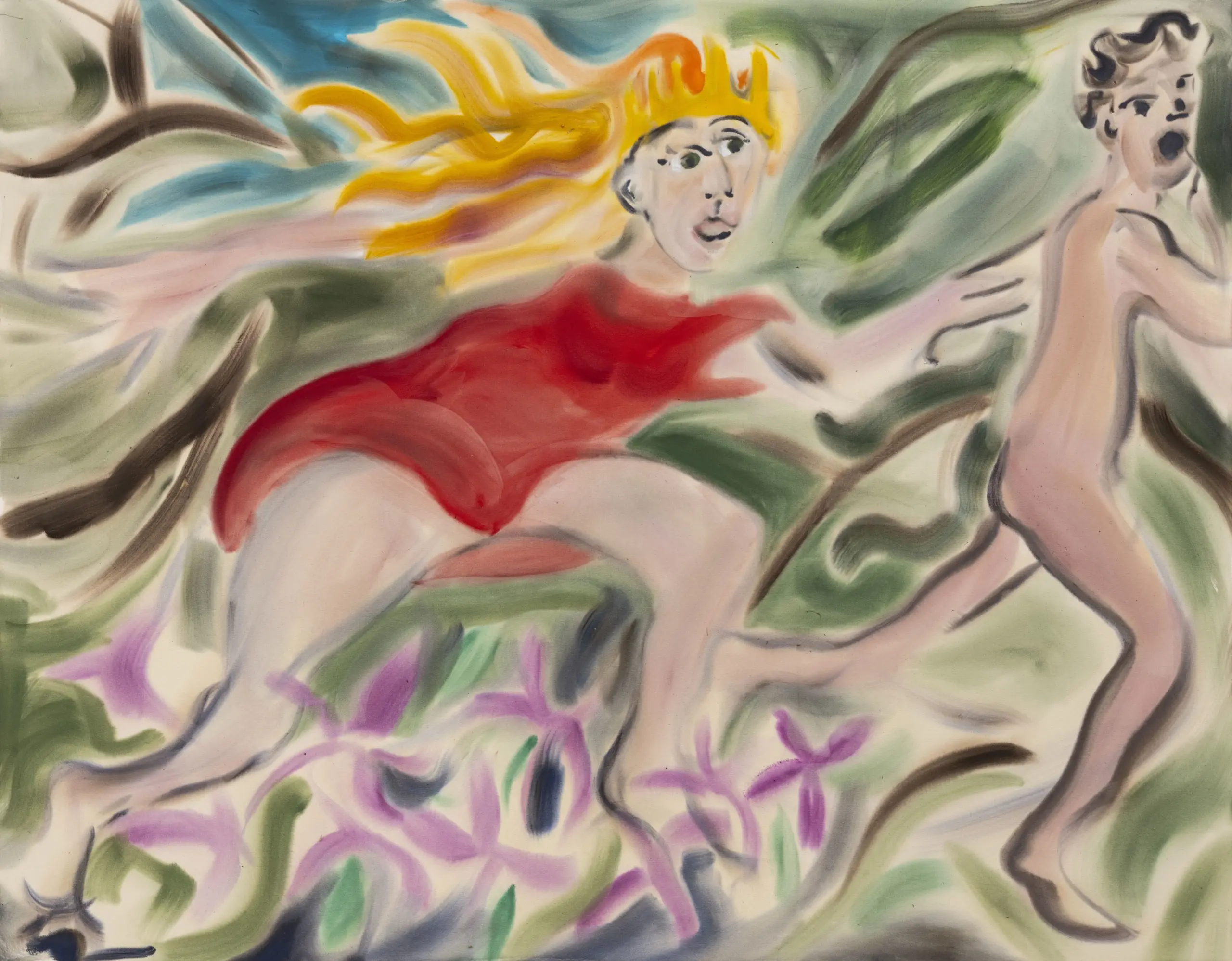
Sophie von Hellermann, Fond Chase, 2020, Acrylic on canvas, Courtesy of the artist and Pilar Corrias Gallery, London
Playing Hard to Get
In some cases, the rarity and desirability of an artwork are heightened by a gallerist’s “hard-to-get” tactics. These highly sought-after pieces often have long waiting lists, much like the most eligible bachelors and bachelorettes. When a gallerist mentions a long list, it only amplifies the piece’s allure.

Emily Mae Smith, Daphne of the West, 2020, Oil on linen, Courtesy of the artist and Petzel Gallery
Galleries often protect and nurture an artist’s career by placing works with important collectors or institutions, ensuring the artist’s growth. This is much like parents vetting suitors for their child, ensuring that only the most worthy are granted access to the family’s legacy.
Is Online Reliable?
Let’s talk about buying art online. Is it like online dating? The pandemic certainly made both more common. For a casual fling, people might rely on profile pictures alone. But for something more serious, they’ll invest time and effort in getting to know the person. The same goes for art—seeing it in person is crucial to truly understanding its value.
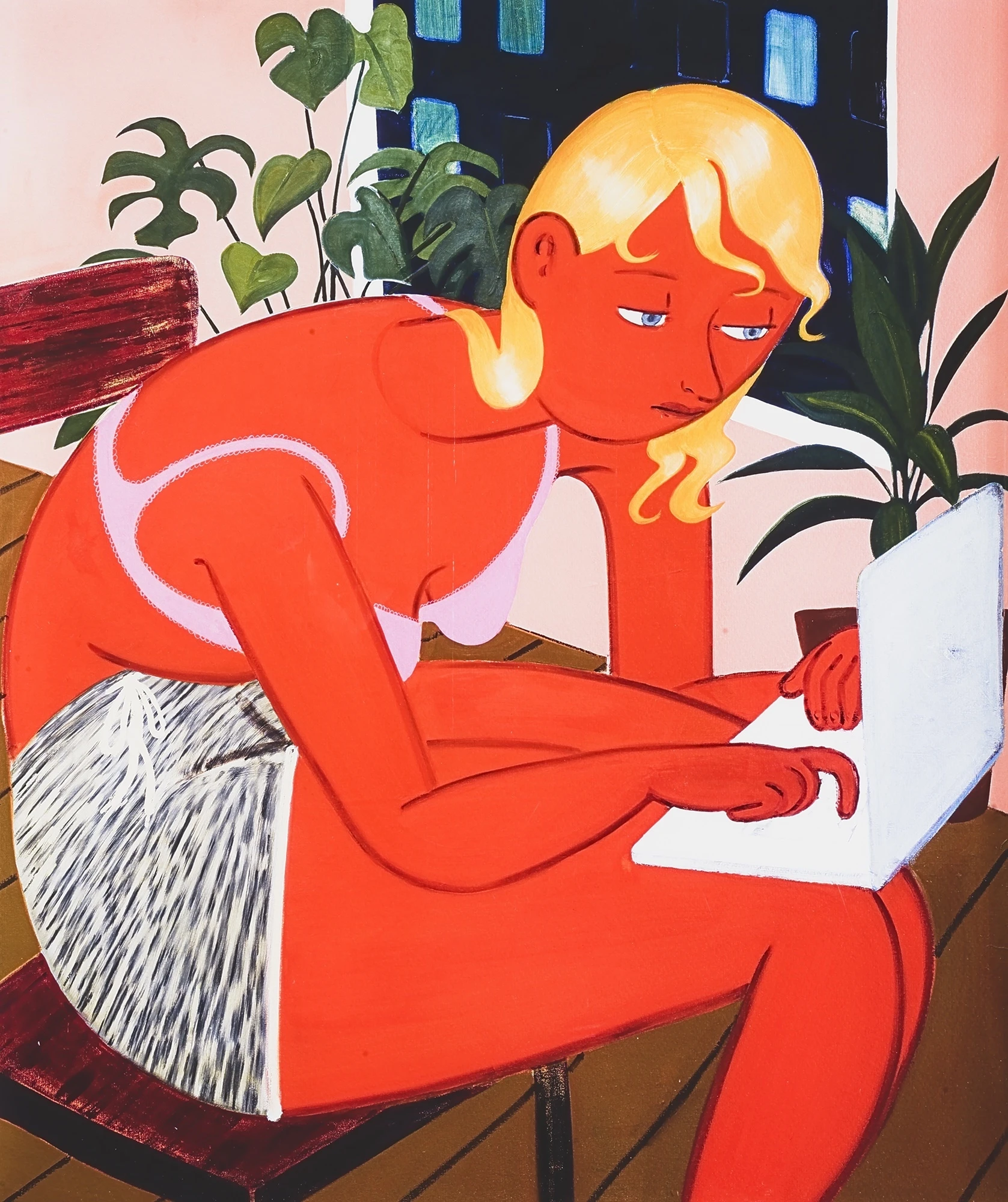
Grace Weaver, Finale, 2018, Archival pigment print on paper
Lower-priced artwork is easier to buy online, much like a low-stakes date. But for a more significant investment, collectors want to see the piece up close, much like people need face-to-face interaction to gauge chemistry. Images can be deceiving, and only an in-person encounter can reveal an artwork’s true essence—just as in dating.
Ultimately, real connections—whether with art or people—are forged offline. In both worlds, building a genuine bond requires more than just a digital exchange; it demands a personal touch.
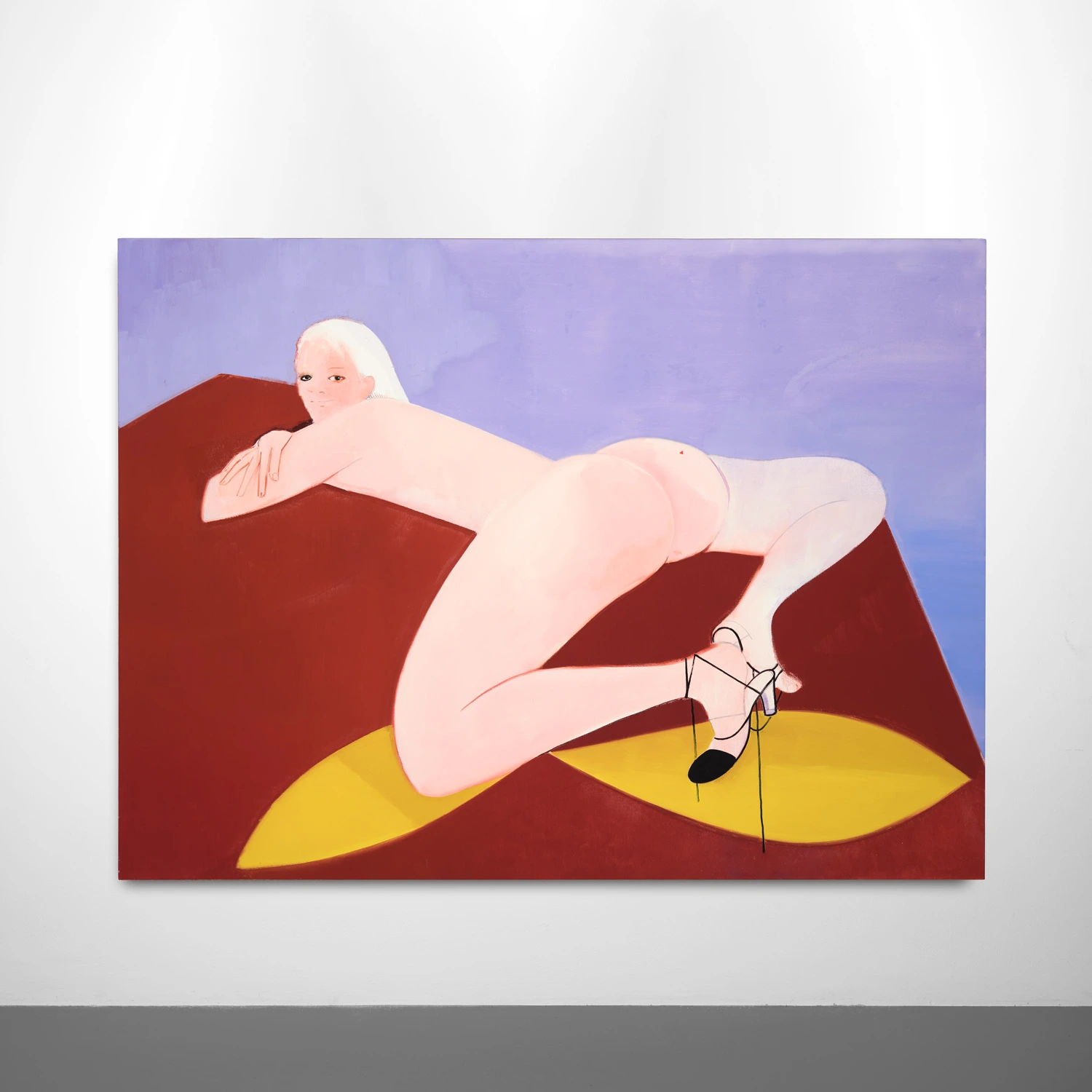
Sofia Mitsola, Clack Clack Rococo, 2019
In the art world, as in love, it’s the face-to-face encounters that matter most. Whether you’re falling for a painting or a person, only in the real world can you truly discover if the spark is real.

Tursic & Mille Tenderness, 2023
-the end-
Text: Luning
Copyediting: Rosie
This article was originally published in my Taste column on Artnet.


